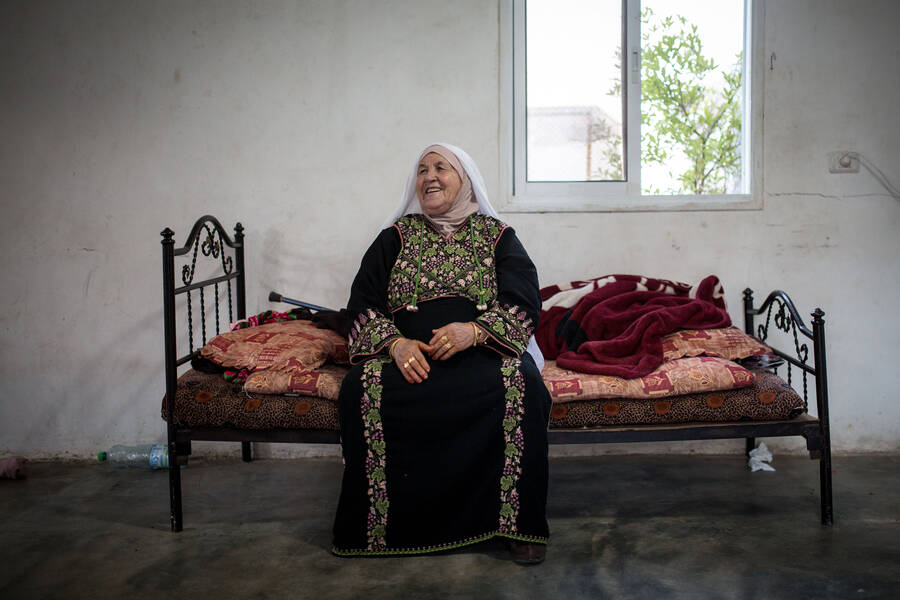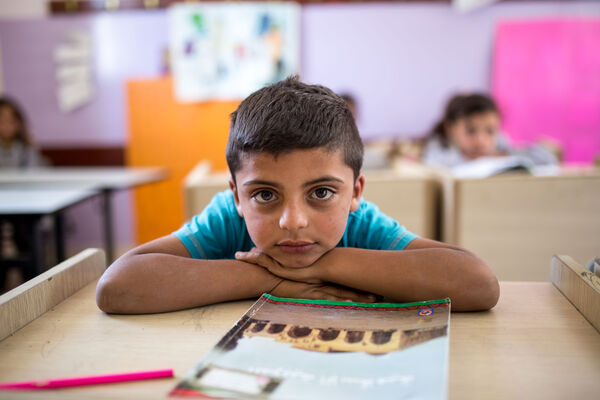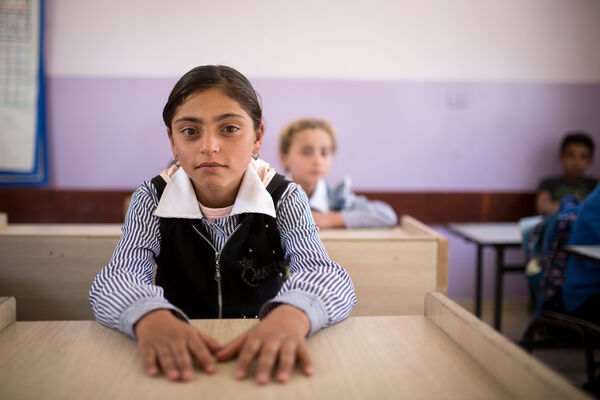
Israel’s Supreme Court will soon decide the case of the residents of Masafer Yatta, who have lived for decades under the threat of displacement by the military.
Emily Glick Introduced by Maya Rosen
FOR AS LONG AS ALI AWAD CAN REMEMBER, he and the other residents of his village, Tuba, have lived under the imminent threat of forced transfer. The village is one of 12 agricultural communities that have existed for generations in Masafer Yatta, an open, sloping stretch of 30,000 dunams (or about 7,500 acres) in the South Hebron Hills of the West Bank. In the early 1980s, the Israeli army declared the area a military firing zone, designating it for use as a training ground for soldiers, and in 1999, when Awad was one year old, the military ordered the villagers to vacate their homes, claiming that they were “illegally dwelling in a firing zone.” Soldiers loaded the area’s 700 residents into trucks, forcibly removing them from their land, and destroying houses, water cisterns, and other property in the process. Left homeless, the residents petitioned the Israeli Supreme Court for the right to return to their land, and in 2000, they were permitted to do so until the court reached a final decision. Over 20 years later, the court has yet to issue a ruling in the case, and the area’s 1,300 residents continue to live in legal limbo.
That limbo may be about to end, and not necessarily to Awad’s family’s benefit: The court is set to convene on March 15th to decide whether the residents of Masafer Yatta may remain in their homes. Not only will the court’s ruling determine the villagers’ futures, it may also influence the government’s ability to use the declaration of military firing zones as a mechanism to claim other swaths of Palestinian land. As new documents recently uncovered by the Israeli NGO Akevot show, when then-Minister of Agriculture Ariel Sharon offered the land of Masafer Yatta to the army in 1981, he did so for the explicit purpose of pushing Palestinian communities out of the area. “We have a significant interest in you being in that area,” Sharon stated to Israeli military representatives in a meeting of the Ministerial Committee for Settlement Affairs, due to “the spread of rural, mountainous Arabs towards the desert.” In the decades since, Israel has repeatedly used the declaration of firing zones in the West Bank as a pretext to steal Palestinian land. Today, a staggering 18% of the West Bank has been taken over by the Israeli army using this tactic. The military actively uses only 20% of that land, a figure that highlights the extent to which firing zones have become a tool in the project of Palestinian displacement.
The law is not the only force arrayed against the residents of Masafer Yatta. Like other Palestinian communities across Area C—the part of the West Bank that is under full Israeli security and civil control and where all Israeli settlements are located—they also face regular settler violence and home demolitions. While Awad may not remember the night his family was forced onto trucks, he is no stranger to the violent practices that have followed. Awad walked to school as a child under military escort because settlers regularly attacked children on their way. More recently, on a Saturday night this past June, settlers set fire to Awad’s family’s hay supply, destroying in two hours what was meant to feed the family’s sheep—their only livelihood—for the entire year. In another village in Masafer Yatta, Mufagara, settlers staged a violent pogrom last month on the Jewish holiday of Simchat Torah, roving from house to house breaking windows and smashing cars, and sending a three-year-old Palestinian child to the hospital with a fractured skull. This kind of brutality is coupled with destruction by the Israeli army, which regularly demolishes not only homes, but also pipelines that provide the area with water, and roads that connect villages in Masafer Yatta with essential services outside. As of April 2020, the Israeli army has issued 455 demolition orders in the area, targeting the majority of structures in the firing zone.
When the Supreme Court convenes in March, lawyers for the Palestinian residents will point, as they have in the past, to international human rights law that forbids the use of occupied territory for the occupier’s benefit, and prohibits the forcible transfer of a protected population. Meanwhile, the Israeli military has continued to claim that it is entitled to train in the area. Often lost in this dispute are the individual stories of families who have made their homes in the same caves and on the same land for many generations. As part of a larger project to highlight life in Masafer Yatta—in which I am also active—photographer Emily Glick documented the day-to-day reality of residents, capturing their creative resistance to displacement. This week, activists hung posters of Glick’s photographs in public spaces in the cities of Haifa, Jerusalem, and Tel Aviv to raise awareness about the threat of eviction facing the villagers; some of the images were quickly destroyed or defaced. In the portraits collected here, Awad accompanies children from his village to school along a route rife with violence from settlers. In the nearby village of Khalet al Daba, Jaber Dababse, whose home was demolished for the fifth time this year, inhabits a makeshift structure as he collects materials to rebuild yet again. Awad’s grandmother Zuhour goes about her daily chores on the land where she raised 15 children under the constant threat of eviction. These glimpses reveal the texture of daily life in Masafer Yatta, and the diverse and powerful forms of defiance displayed by the people who call it home.


Left: Mohammad, 1st grade. Right: Rawaa, 4th grade. Their school in Al-Halawa is under a demolition order.



